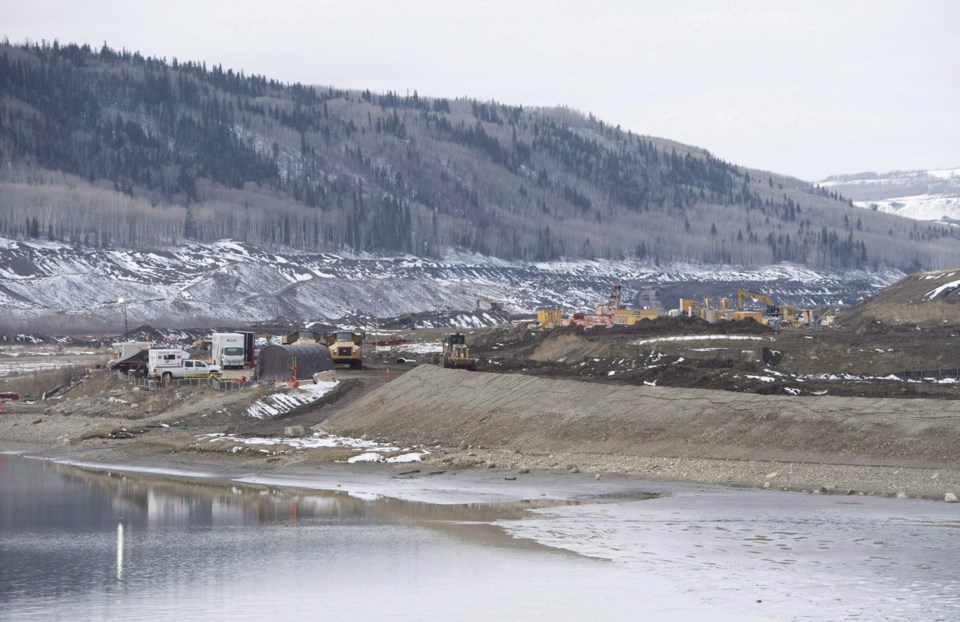FORT ST. JOHN, B.C. — BC Hydro says it has begun filling the reservoir created by the massive Site C dam project in northeastern British Columbia.
The provincial electric utility says in a statement that the filling of the reservoir is one of the last steps toward starting operations for the controversial dam project, located about 14 kilometres southwest of Fort St. John, B.C.
BC Hydro says it will take between two and four months to fill the 83-kilometre-long reservoir, which will cover about 5,550 hectares of land while totalling about 9,330 hectares in surface area.
The utility is warning people to stay away from the area of the reservoir for at least a year after it has been filled, citing possible unstable terrain and floating debris as potential hazards.
Construction of Site C was launched in 2015 under then-premier Christy Clark's BC Liberals government and has seen cost estimates spike from up to $6.6 billion in 2007 to $16 billion in 2021.
Multiple groups opposed the province's plan to complete the dam after the NDP formed government in B.C. in 2017, but former premier John Horgan said the dam needed to be finished despite his party not supporting the start of construction in the first place.
Horgan said at the time that cancelling the megaproject mid-construction would have meant laying off 4,500 workers as well as the loss of $10 billion in costs already sunk in building the dam, resulting in a 26 per cent increase in B.C. residents' hydro bills over 10 years.
The project had been opposed by groups such as the Peace Valley Landowner Association, Prophet River First Nation and West Moberly First Nations on both environmental and land-rights grounds.
BC Hydro says construction is now more than 85-per-cent complete, with the first power-generating unit on-site scheduled to begin operations in December.
When all six power generators are operational by fall 2025, BC Hydro says Site C will add 1,100 megawatts of electricity capacity while producing about 5,100 gigawatt hours annually — about an eight-per-cent increase to the province's overall power supply.
BC Hydro says Site C will provide enough clean electricity to reliably power nearly 500,000 homes or 1.7 million electric vehicles when fully operational.
The provincial utility says the project also remains on track to be completed within the $16-billion budget established in 2021.
The idea of Site C — a third dam on the Peace River in northeastern B.C. — began decades ago but had been shelved in 1989 due to local opposition.
This report by The Canadian Press was first published Aug. 25, 2024.
The Canadian Press

